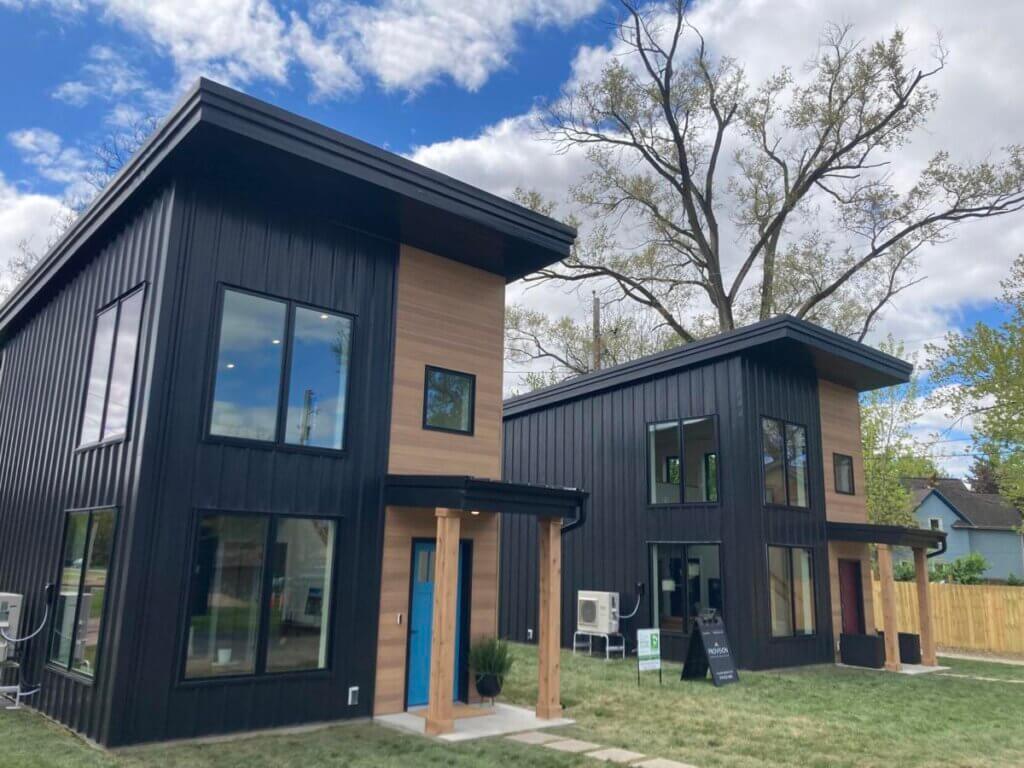Key Remaining Questions Following New Amendments to SB 50
Published On January 17, 2020
Senate Bill 50—San Francisco Senator Scott Wiener’s high-profile effort to reform local zoning in transit- and job-rich areas—is back for its second year in the California legislative session. Amendments introduced on January 3rd include new language on local flexibility, among other revisions. The bill now faces a January 31st deadline to be voted out of the Senate and into the Assembly. Major land use reforms, such as those proposed by SB 50, are essential if California is going to alleviate its ongoing housing affordability crisis. Yet, while new financial commitments, tenant protections, and other reforms have all moved the state in the right direction in recent years, land use reform at the scale needed to meet California’s crisis has proven elusive.
New SB 50 amendments lay the groundwork for the bill’s movement from the Senate to the Assembly and its potential passage in the fall. Yet, several questions remain that will determine just how impactful SB 50 will ultimately be. This blog lays out what’s changed—and what hasn’t—and how the bill’s current version aligns with the Terner Center’s recently-released research on land use reform best practices.
Local flexibility plan option offers cities leeway in meeting upzoning goals.
The most significant change to SB 50 is the creation of a “Local Flexibility Plan” option, which would allow cities to develop alternative zoning plans. This change is designed to counteract the claim that the bill is a “one-size-fits-all” solution, a common refrain from the bill’s opponents who lament the loss of local control. To make use of this option, cities must prove that an alternative plan would create zoned capacity for as much or more housing than SB 50 standards require. Additionally, a local plan must demonstrate a reduction of vehicle miles traveled (VMT) and compliance with fair housing rules (i.e., new housing cannot be zoned exclusively in lower-income communities). Cities would have two years to develop these plans, which would ultimately be reviewed by the California Department of Housing and Community Development (HCD).
This new provision is an important step in the right direction. In our recent brief, we examined the importance of local flexibility to meet mandated baseline standards given housing market variation across cities and neighborhoods. Oregon took this approach with the passage of HB 2001, which requires cities with populations above 25,000 to plan for “missing middle” housing types in single-family zones, but gives cities local control over siting and design. This feature was key in building support among communities and policymakers wary of a one-size-fits-all approach. By allowing cities latitude in meeting the goals of HB 2001, state leaders avoided more contentious battles than if the state had dictated exactly where and how cities had to change their existing land use patterns while still achieving the goal of planning for population growth in a manner that is sensitive to local needs and market conditions.
Like HB 2001, SB 50’s “Local Flexibility Plan” option offers cities the opportunity to determine how they will accommodate more zoned capacity. In practice, this means that cities could decide to zone more densely immediately adjacent to transit stations, and less densely further out, rather than allowing four to five stories throughout the designated transit areas. This flexibility allows cities to plan for more housing in a manner that is consistent with local goals and plans.
While this step is a positive one for SB 50, questions remain. For example, determining capacity under SB 50 in order to develop a local plan will prove difficult given the lack of some key data points. Specifically, SB 50 cannot be used where buildings have had tenants in the previous seven years. But because there is no statewide database that tracks tenancy by building or unit, it is unclear how cities will determine which buildings would be eligible for increased density under SB 50, creating uncertainty over how much zoned capacity a “Local Flexibility Plan” must incorporate to align with SB 50. Some cities could potentially use this ambiguity to limit capacity in their local plans. As currently written, it will fall on the Governor’s Office of Planning and Research (OPR) to develop guidance on how cities should determine the alignment of the “Local Flexibility Plan” with SB 50 goals and priorities. One potential solution would be for cities to determine new capacity under a “Local Flexibility Plan” without factoring in the seven year tenancy requirement, while still enforcing such requirements upon implementation (e.g., requiring an applicant prove that the building they are requesting SB 50 bonuses on has not had tenants within the previous seven years).
Other questions surround the decision to rely on OPR to implement the “Local Flexibility Plan” guidelines, given that HCD is responsible for related issues such as the Regional Housing Needs Assessment, Housing Element, and other important and adjacent housing laws and policies. Because of this, it will be important for HCD to ensure these laws are complementary and coordinated. While consultation with OPR makes sense, HCD should be the lead agency responsible for implementation.
Clarity needed on protection policies.
Key questions about components of the bill intended to expand tenant protections also remain unresolved.
For example, the “sensitive communities” language has not changed and remains overly broad. As noted in our 2019 research, the current “sensitive communities” definition applies to nearly 44% of eligible census tracts, potentially exempting them from SB 50 changes for five years.
As we’ve seen in our recent land use research, zoning reform can be complementary to anti-displacement and tenant-focused policies, enabling both to occur in parallel. For the city of Portland, although analysis of the city’s zoning reform plans suggests that, over time, the plan is likely to reduce displacement of low-income renters and reduce the costs of housing for additional housing types in single-dwelling zones, the city is taking steps to develop complementary protection and preservation policies to hedge against some of the unintended outcomes of zoning reform. Given the engagement process underway, as well as the passage of Oregon’s statewide rent cap and just cause eviction standards, advocates in Oregon noted that increasing housing opportunities and achieving greater affordability outweighed the potential near-term displacement risks that may be associated with land use reform.
In California, the same conditions exist to forge a similar outcome, particularly after the passage of AB 1482 in 2019 and the inclusion of strong protection provisions in SB 50. With this in mind, exempting “sensitive communities” for five years should be reconsidered, as the same goals could be achieved by requiring cities with sensitive communities subject to SB 50 to address displacement concerns in their Local Flexibility Plans.
The SB 50 inclusionary housing language also remains unchanged, though revisions are forthcoming as discussions with advocate groups continue to cultivate support for the bill. As these discussions progress, proponents and advocates should be careful to ensure that any inclusionary requirements are structured to work with local market conditions. As currently written, the inclusionary standards in SB 50 already stretch project feasibility thin, as determined by plugging in these requirements to our modeling used in our 2019 “Making It Pencil: The Math Behind Housing Development” research:
| 120-Unit Prototype Project | Return-on-Cost (ROC) | ROC Spread With Capitalization Rates (4.3) |
| Terner 2019 East Bay baseline | ||
| No Affordability Component | 5.46% | 1.16% |
| SB 50 – (21-200 unit project) | ||
| 6% Extremely-Low-Income Option | 5.25% | .95% |
| 8% Very-Low-Income Option | 5.10% | .80% |
| 15% Low-Income Option | 4.79% | .49% |
In this East Bay example, it is clear that the current inclusionary requirement in SB 50 would turn a reasonably feasible project into a marginal one, as measured by a project’s difference between capitalization rates and the project model’s anticipated return-on-cost (ROC). Moreover, given the wide variation in market dynamics across the state, a “feasibility standard” for inclusionary requirements should also be considered to ensure this provision does not unintentionally stymie development in areas that cannot support the legislated inclusionary levels.
One notable change to tenant-focused provisions is the addition of a preference policy for affordable inclusionary units. While the intent of a preference policy is to give existing residents opportunities to live in new projects in their neighborhoods, this provision is likely to run into challenges with federal fair housing law. In order to maintain such a provision, the bill’s authors will need to consider a mechanism to demonstrate that SB 50’s preference policy will not create any discriminatory impacts. SB 50 could learn from the city of San Francisco’s experience in developing a rigorous methodology to substantiate their local preference policy’s adherence to federal fair housing law. And as any preference policy passed within SB 50 may face legal challenges, a severability clause should be included to ensure the other major components of the bill are not impacted as preference policy legality is litigated. An alternative is to remove this provision from the SB 50 baseline, but enable it to be included in Local Flexibility Plans, as long as it does not violate federal and state fair housing laws.
Streamlining needed to ensure housing gets built.
The current version of SB 50 gives ministerial approvals for four-plex conversions. This is a common sense provision that should also be extended to all projects that conform with SB 50 that otherwise must contend with long approval processes and litigation. By bypassing conditional use processes, projects can get built faster and more cost-effectively.
In our research, officials we spoke to pointed to the importance of creating predictable processes, such as reasonable approval and permitting timelines, following land use changes to ensure that their planning work resulted in the desired new development. In Los Angeles, the Transit Oriented Communities (TOC) program allows for ministerial approval of projects that request baseline incentives. City officials credit this component of the program with the tremendous uptake in planning applications and building permits in TOC areas.
Omitting certain land is a missed opportunity.
While SB50 undoubtedly increases the capacity for housing, the omission of some land uses from any reform leaves significant amounts of land untouched, potentially in affluent communities. In our 2019 research with the Urban Displacement Project, we found that while some communities allow residential development on commercial land, not all do. For example, the city of Menlo Park does not allow residential building on land zoned for offices. As a result, 12% of land surrounding their CalTrain Station—or 64 acres—would not be subject to SB 50 reforms. In contrast, the less-affluent neighborhoods of Fruitvale in Oakland and Boyle Heights in Los Angeles do allow residential on commercially-zoned land.
In Portland, Denver, and Grand Rapids, plans to expand housing supply focused on commercial corridors and job centers, not just areas zoned for residential. In Los Angeles, the TOC program has created significant new housing supply along commercial corridors. SB 50 could expand eligible land to include uses that are not currently zoned for housing. This would add even greater flexibility to Local Community Plans.
Large-scale zoning reform, like those proposed in SB50, will be important for California to reach its long-term housing goals to stabilize and reduce housing costs for residents across the state. SB50’s new amendments are moving the bill in the right direction. Addressing the key questions raised here could further strengthen both its impact and feasibility to ensure that SB 50 fulfills its potential to create the supply of new homes desperately needed.





